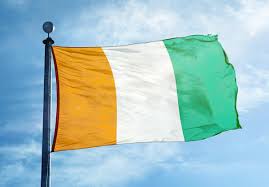This post discusses the history of regions of Ivory Coast, the Governance and purpose, the current regions and the regions before 2011.
The regions of Ivory Coast (French: régions de la Côte d’Ivoire) are the second-level subdivisions of Ivory Coast. There are 31 regions, and each region is subdivided into two or more departments, the third-level division in Ivory Coast. Two to four regions are combined to make up an autonomous district, the first-level subdivision. The autonomous districts of Abidjan and Yamoussoukro are not divided into regions.
HISTORY
The first 10 regions were established in 1990. At the time, they supplanted the departments as the first-level administrative subdivisions of the country, with the departments being converted into second-level subdivisions. Two new regions were added in 1996. Four new regions were added in 1997, and all the existing regions changed their names, bringing the total to 16. In 2000, four of the regions were divided to create three more regions, bringing the total to 19.
Prior to the 2011 reorganization of the subdivisions of Ivory Coast, the 19 regions were the first-level subdivision of the country. In the reorganization, districts were created and replaced regions as the first-level subdivisions and the 19 regions were reorganized into 30. In 2012, one region was divided to create a 31st region.
In 2014, the districts were abolished except for Abidjan and Yamoussoukro. Then in 2021 the former districts were reinstated as autonomous districts.
GOVERNANCE AND PURPOSE
The executive of each region is headed by a prefect, who is appointed by the council of ministers (cabinet) of the national government. For departments that house regional capitals, the prefect of the department is the same individual as the prefect of the region, though the two offices of prefect remain distinct. The legislative body of the region is the Regional Council, which is elected and headed by a President
The government of each region is responsible for designing and implementing programmers to improve the economic, social, and cultural life of the region. Regions are also responsible for coordinating and harmonizing the activities of their departmental governments and for implementing public interest projects established by the district or the national government.
REGIONS
There are currently 31 regions of Ivory Coast. Two areas of the country, the autonomous districts of Abidjan and Yamoussoukro, are not divided into regions. The regions are as follows, with the date of creation in parentheses:
- Agnéby-Tiassa (2011)
- Bafing (2000)
- Bagoué (2011)
- Bélier Region (2011)
- Béré (2011)
- Bounkani (2011)
- Cavally (2011)
- Folon (2011)
- Gbêkê (2011)
- Gbôklé (2011)
- Gôh (2011)
- Gontougo (2011)
- Grands-Ponts (2011)
- Guémon (2011)
- Hambol (2011)
- Haut-Sassandra (1997)
- Iffou (2011)
- Indénié-Djuablin (2011)
- Kabadougou (2011)
- La Mé (2011)
- Lôh-Djiboua (2011)
- Marahoué (1997)
- Moronou (2012)
- Nawa (2011)
- N’Zi (2011)
- Poro (2011)
- San-Pédro (2011)
- Sud-Comoé (1997)
- Tchologo (2011)
- Tonkpi (2011)
- Worodougou (1997)
REGIONS BEFORE 2011
Before reorganization in 2011, the regions were the first-level subdivisions of Ivory Coast. The 19 regions that existed immediately prior to the reorganization were as follows, with their creation date in parentheses:
Agnéby (1997)
Bafing (2000)
Bas-Sassandra (1997)
Denguélé (1997)
Dix-Huit Montagnes (1997)
Fromager (2000)
Haut-Sassandra (1997)
Lacs (1997)
Lagunes (1997)
Marahoué (1997)
Moyen-Cavally (2000)
Moyen-Comoé (1997)
N’Zi-Comoé (1997)
Savanes (1997)
Sud-Bandama (1997)
Sud-Comoé (1997)
Vallée du Bandama (1997)
Worodougou (1997)
Zanzan (1997)
As is the case now, regions were further divided into departments.


